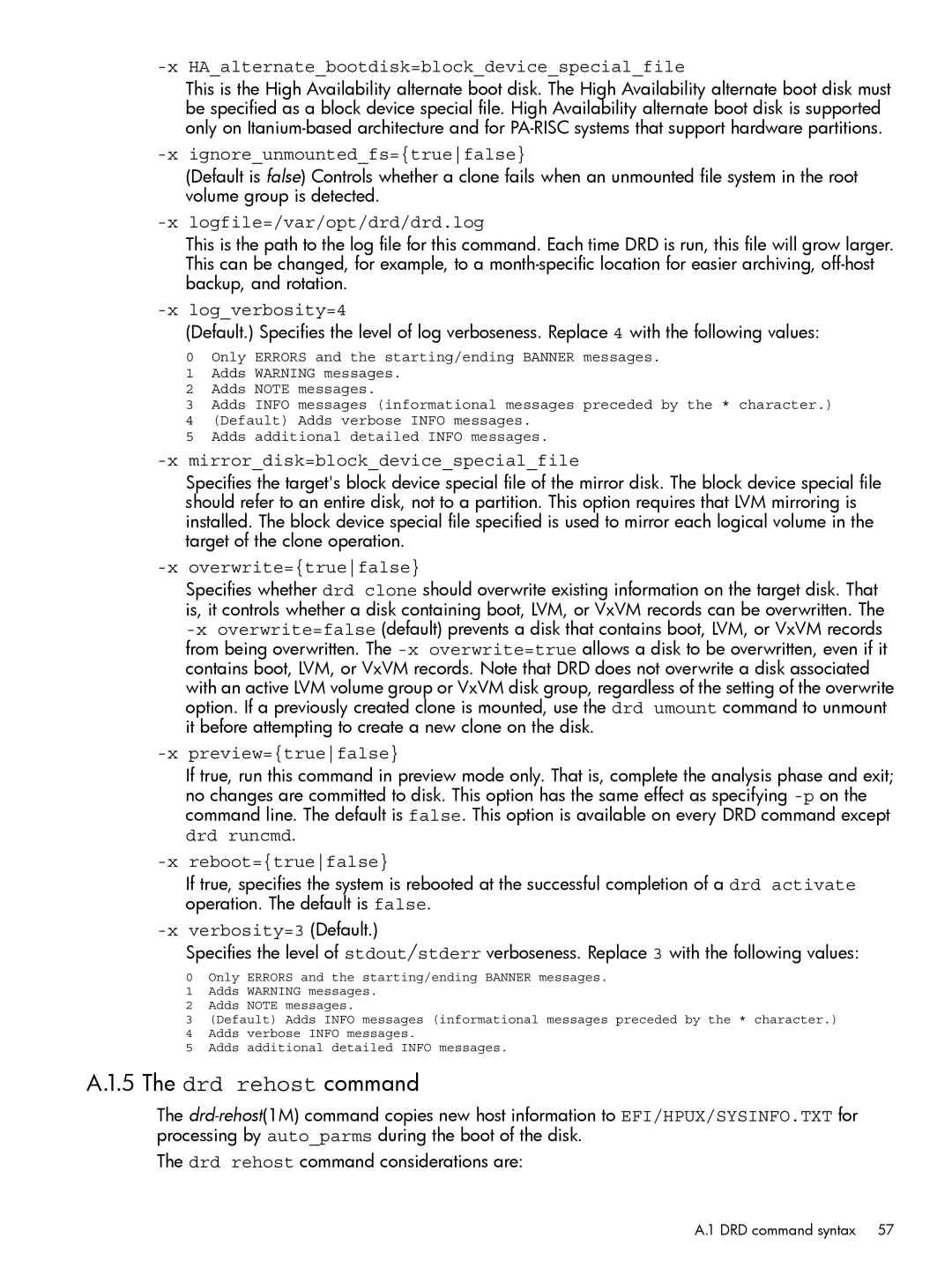-x HA_alternate_bootdisk=block_device_special_file
This is the High Availability alternate boot disk. The High Availability alternate boot disk must be specified as a block device special file. High Availability alternate boot disk is supported only on
-x ignore_unmounted_fs={truefalse}
(Default is false) Controls whether a clone fails when an unmounted file system in the root volume group is detected.
-x logfile=/var/opt/drd/drd.log
This is the path to the log file for this command. Each time DRD is run, this file will grow larger. This can be changed, for example, to a
-x log_verbosity=4
(Default.) Specifies the level of log verboseness. Replace 4 with the following values:
0Only ERRORS and the starting/ending BANNER messages.
1Adds WARNING messages.
2Adds NOTE messages.
3Adds INFO messages (informational messages preceded by the * character.)
4(Default) Adds verbose INFO messages.
5Adds additional detailed INFO messages.
-x mirror_disk=block_device_special_file
Specifies the target's block device special file of the mirror disk. The block device special file should refer to an entire disk, not to a partition. This option requires that LVM mirroring is installed. The block device special file specified is used to mirror each logical volume in the target of the clone operation.
-x overwrite={truefalse}
Specifies whether drd clone should overwrite existing information on the target disk. That is, it controls whether a disk containing boot, LVM, or VxVM records can be overwritten. The
-x preview={truefalse}
If true, run this command in preview mode only. That is, complete the analysis phase and exit; no changes are committed to disk. This option has the same effect as specifying
-x reboot={truefalse}
If true, specifies the system is rebooted at the successful completion of a drd activate operation. The default is false.
-x verbosity=3 (Default.)
Specifies the level of stdout/stderr verboseness. Replace 3 with the following values:
0Only ERRORS and the starting/ending BANNER messages.
1Adds WARNING messages.
2Adds NOTE messages.
3(Default) Adds INFO messages (informational messages preceded by the * character.)
4Adds verbose INFO messages.
5Adds additional detailed INFO messages.
A.1.5 The drd rehost command
The
The drd rehost command considerations are:
A.1 DRD command syntax 57
